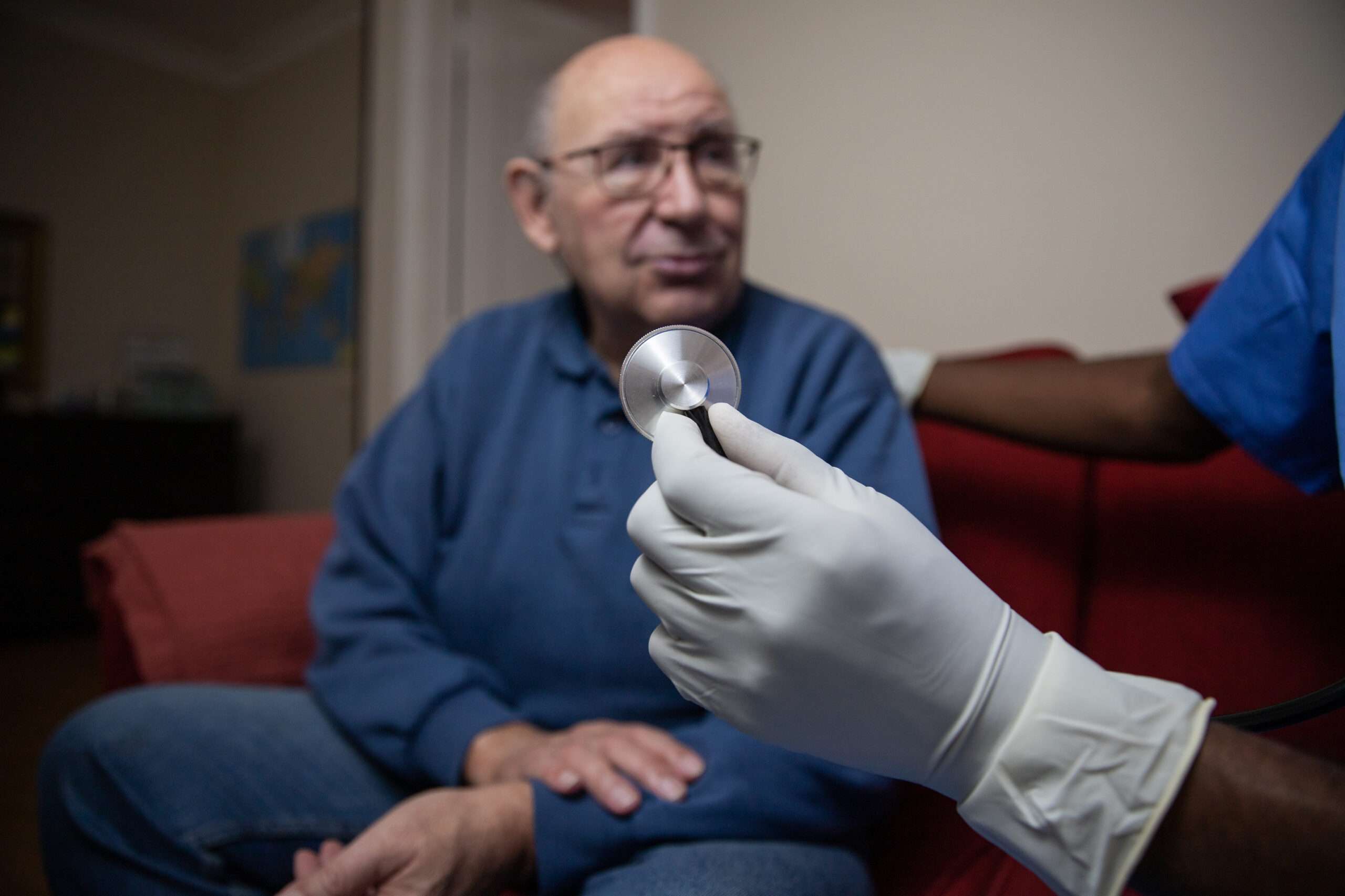Hospitals striving to scale hospital-at-home programs often face a bottleneck: identifying the right patients quickly and consistently. Inbound Health’s analytics-driven platform introduces structured workflows that replace manual reviews with faster, more reliable patient finding. By relieving staff of operational burdens and standardizing patient identification, health systems have seen a 76% increase in admissions and greater scalability across diverse care settings.
Download the full Industry Solution Brief to learn how your health system can scale its hospital-at-home program with greater precision, efficiency, and ROI.
-
Hidden In Plain Sight: Patient Acquisition in Hospital-At-Home

-
Optimizing Value in the Care Continuum: A Real-World Claims Analysis

As the healthcare industry faces increasing regulatory changes, margin pressures, and rising costs, companies like CVS Health and Humana are feeling the squeeze. Experts emphasize the need for value optimization, with low-cost care settings showing the most potential for success. Inbound Health and Allina Health are leading the way with their innovative Elevated Care at Home (ECH) program. Developed in response to the COVID-19 pandemic, ECH offers an alternative to traditional hospital stays and post-acute care services, improving outcomes while addressing capacity and cost challenges. Together, Inbound Health and Allina Health are transforming transitional care to enhance both quality and affordability.
-
Improving Patient Outcomes with Acute Hospital Care at Home

Preliminary Analysis of Hospital Care at Home Performance Outcomes
This preliminary analysis examines performance outcomes in patients discharged to Inbound Health’s Hospital Care at Home program, which meets CMS Acute Hospital Care at Home requirements, within a Minneapolis-based health system.
Patients in Inbound’s program had a lower 30 day readmission rate compared to matched patients based on severity of illness. Also, the mean length of inpatient stay was shorter with the Inbound Health cohort of patients.
We improved care and created greater efficiency for our patients, families, and healthcare systems.
-
Medication Reconciliation Process Prevents Costly Errors

Problem:
The FDA receives more than 100,000 medication error reports per year. These errors can occur in hospitals, clinics, patient homes, or pharmacies (FDA, 2019).1 Research suggests the average hospitalized patient is subject to at least one medication error per day, and an estimated 40% of errors occur in handoffs during admission, transfer, and discharge of patients.2,3 Of these, an estimated 20% result in preventable and costly utilization, such as hospitalizations and fatalities due to serious side effects.
Solution:
Inbound Health is committed to ensuring the accuracy and safety of medication management for patients in its at-home care programs through a comprehensive medication reconciliation process. The care team reviews discharge summaries and carefully sorts through all new, existing, and outdated medications to ensure that patients are taking only those necessary and at the correct times. The team also assists with medication refills, monitors for potential drug interactions, and collaborates with pharmacists when needed to address any concerns.Over a 2.3-year period (01/01/2022-03/31/2024), Inbound Health achieved a medication reconciliation completion rate of over 95%, preventing the potential for costly and avoidable adverse events for thousands of patients in its post-acute care-at-home programs.
Patient Snapshot
A 73-year-old male patient was recently discharged from the hospital with a detailed discharge summary. The Community Paramedic team was tasked with reviewing this summary, conducting medication reconciliation, and ensuring proper medication management. During a thorough review, the Community Paramedic discovered that the patient had mistakenly included several discontinued medications, including some antihypertensives, in his weekly medication supply. Had this issue gone unnoticed, the patient might have faced a higher risk of hospital readmission due to potential medication errors.
The Community Paramedic team undertook a meticulous review of the patient’s medications, verifying each item in his pillbox. Medications not included in the prescribed care regimen were removed, a process that took approximately 45 minutes to an hour. The community paramedic documented the incident and the corrective actions taken. An adjustment was made to the patient’s Amiodarone dosage, which is critical for managing certain abnormal heart rhythms and ensuring patient safety.
An Inbound Health analyst was assigned to research the clinical outcomes associated with hypertension medications and identify potential safety issues arising from incorrect dosages of drugs like Hydralazine and Amiodarone. The team also ensured the patient received the correct medications and understood their use, which helped build trust with both the patient and his family.
The Community Paramedic team verified that the patient was sent home with the correct medications and that they were received as prescribed. They coordinated with the patient’s pharmacy to ensure timely access to medications and provided additional support, including managing other aspects of the patient’s care such as steroids for infections, insulin for high blood sugar related to steroid use, medications for lung conditions, and arranging for oxygen needs. The patient received a transport tank and later a concentrator for home use.
This case underscores the essential role of medication reconciliation in preventing potential readmissions and ensuring patient safety. The proactive approach of the Community Paramedic team in identifying and addressing medication discrepancies highlights the importance of thorough medication management and effective communication within the healthcare team.
Sources:
- https://www.singlecare.com/blog/news/medication-errors-statistics/#:~:text=The%20U.S.%20spends%20more%20than,errors%20(NCBI%2C%202021).
- Institute of Medicine. Preventing medication errors. Washington, DC: National Academies Press; 2006.
- Rozich JD, Howard RJ, Justeson JM, et al. Patient safety standardization as a mechanism to improve safety in health care. Jt Comm J Qual Saf. 2004;30(1):5–14.
-
Advanced Care-at-Home Programs Drive Value for Heart Failure Patients

Authors: Mary Oberst MSC, Camilla Dziura MHA, Seth Glickman, M.D., MBA,
Rachel Rivard, M.D., Kimberly Hedger, Emily Downing, M.D.
Preventable heart failure readmissions pose a significant financial challenge to hospitals and health systems. Reducing 30-day heart failure readmissions optimizes reimbursement for hospitals that participate in CMS value-based programs, such as the Hospital Readmissions Reduction Program (HRRP), which incentivizes processes of care that decrease preventable events and thereby reduce overall readmission rates.
Advanced care-at-home programs that serve as alternatives to extended hospitalization and institutional post- acute care offer an innovative and effective solution for hospitals seeking to optimize patient outcomes and reduce avoidable readmissions, resulting in substantial financial gains.
In implementing Inbound Health’s novel in-home care model that supports early hospital discharge and provides an alternative to institutional post-acute care, Allina Health was able to reduce 30-day readmissions in their heart failure population by 30% over a 2.8-year period, generating significant cost- savings for the health system.
-
Acute and Post-Acute Care at Home Programs Contribute to Shorter Hospital Length of Stay

1 less day in the hospital
Average traditional hospital stay: 7.4 days
Average discharge to acute or post-acute care at-home programs: 6.4 days
A study by Inbound Health analyzed the length of stay (LOS) for patients discharged to one of their acute or post-acute care-at-home programs, comparing it to those who remained in the hospital for all their acute care needs. The goal was to determine if receiving advanced care at home results in a shorter hospital stay compared to patients who did not have alternative care options.
Researchers reviewed a substantial dataset comprising 10,519 care episodes over three years, from 2021 to 2023. This extensive review allowed for a detailed examination of patient outcomes, length of stay, costs, and other key metrics associated with both care models.
The research comparing hospital length of stay (LOS) for patients discharged to Inbound Health’s acute and post-acute care-at-home programs versus those who completed their acute care in the hospital shows an average reduction of one day for those receiving home-based care. For treatment of sepsis, respiratory failure, and kidney and urinary tract infections, the reduction in LOS ranged from one to two days.
The increase in throughput has multiple benefits for health systems. It allows hospitals to handle more patients within existing infrastructure and resources, effectively increasing their overall capacity to deliver healthcare services. The shorter LOS also reduces the cost of care for healthcare providers and payers.
Researchers concluded there were several factors that shortened the hospital LOS for patients who were discharged to Inbound Health’s care at home programs:
Focused Care Delivery: Inbound Health’s program typically has a narrower focus on recovery compared to traditional healthcare facilities, which may also provide long-term care services. This focused approach allows for more efficient and goal-oriented care delivery, helping patients achieve their recovery goals sooner and facilitating timely discharge from the hospital.
Streamlined Admission Process: With Inbound Health’s program, there is a streamlined admission process, enabling patients to transition quickly from the hospital to home-based care. This reduces administrative delays and logistical challenges associated with facility-based admissions, allowing patients to ultimately spend fewer days in the hospital.
Close Monitoring and Supervision: Patients in Inbound Health’s program receive close monitoring and supervision from skilled healthcare professionals, including nurses, therapists, and physicians. This intensive oversight helps detect and address any complications or barriers to recovery promptly, optimizing the recovery process and minimizing hospital stays.
Enhanced Care Coordination: The program prioritizes care coordination between hospital teams and at home providers, ensuring seamless transitions and continuity of care. This collaborative approach facilitates discharge planning and post-discharge support, reducing the likelihood of hospital readmissions and enabling patients to leave the hospital sooner.
Inbound Health’s care at home programs provide a thorough and patient-centered approach to care, emphasizing both individualized attention and efficient delivery. By addressing the unique needs of patients moving from hospital to home, this program accelerates recovery, enhances outcomes, and reduces the length of hospital stays.
